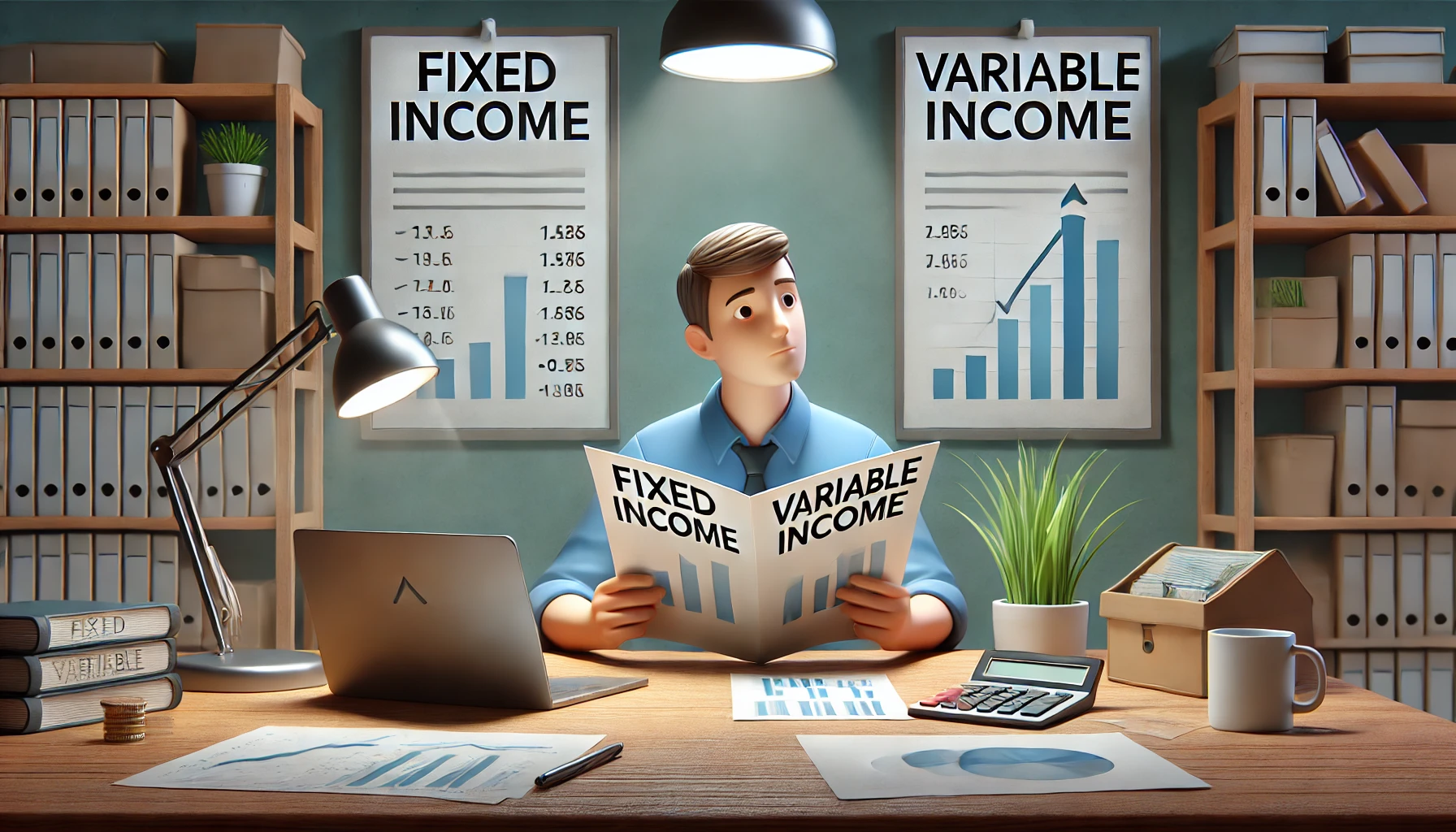If you’re just starting to learn about investments, you’ve probably heard the terms fixed income and variable income. Understanding the difference between these two categories is essential when building your investment strategy, especially if you want to balance risk and return in a smart way.
Let’s break it down in a simple, beginner-friendly way so you can start making confident choices with your money.
What Is Fixed Income?
Fixed income refers to investments that pay a predictable and regular return over a period of time. These returns are usually in the form of interest payments and are often received on a monthly, quarterly, or annual basis.
Examples of fixed income investments include:
- Treasury bonds
- Corporate bonds
- Certificates of deposit (CDs)
- Fixed annuities
- Preferred stocks
- Government securities (like T-notes, T-bills)
Key Features of Fixed Income
- Predictability: You know how much you’ll earn
- Lower risk: Safer than stocks, especially government-issued instruments
- Stability: Ideal for retirees or conservative investors
- Limited growth: Lower return compared to riskier assets
What Is Variable Income?
Variable income involves investments where returns fluctuate over time. There’s no guaranteed payout. Your earnings depend on market performance, company profits, or asset appreciation.
Examples of variable income investments include:
- Stocks
- Real estate
- Mutual funds
- ETFs (Exchange-Traded Funds)
- Cryptocurrencies
- Commodities (like gold, oil)
Key Features of Variable Income
- Higher potential returns: Greater upside if the market performs well
- More risk: Can also lead to losses
- Growth opportunity: Good for long-term wealth building
- Market-dependent: Influenced by global events, economic conditions, and company performance
Fixed Income vs. Variable Income: What’s the Difference?
| Feature | Fixed Income | Variable Income |
|---|---|---|
| Risk Level | Low to moderate | Moderate to high |
| Return Type | Predictable (interest or yield) | Fluctuating (based on performance) |
| Examples | Bonds, CDs, Treasury notes | Stocks, ETFs, real estate |
| Goal | Stability, capital preservation | Growth, wealth accumulation |
| Ideal For | Conservative investors, retirees | Growth-focused investors, long-term planners |
Which One Should You Choose?
It depends on your financial goals, age, and risk tolerance.
You might prefer fixed income if:
- You’re close to retirement
- You want predictable cash flow
- You need to protect your capital
- You’re saving for a short-term goal (e.g. buying a car)
You might prefer variable income if:
- You’re young and have time to ride out market fluctuations
- You want to build long-term wealth
- You can tolerate some level of risk
- You’re saving for retirement, a home, or a big future goal
Can You Invest in Both?
Absolutely—and that’s often the smartest choice. A diversified portfolio combines both fixed and variable income to balance risk and reward.
For example:
- 70% variable income (stocks, ETFs)
- 30% fixed income (bonds, CDs)
As you age or get closer to big financial goals, you might shift more toward fixed income to protect what you’ve built.
How to Get Started
1. Set your financial goals: Are you saving for retirement, a house, or financial freedom?
2. Know your risk tolerance: Can you handle market ups and downs?
3. Choose a mix that fits your life stage: Younger = more variable income; older = more fixed income
4. Rebalance annually: Adjust your mix as your life changes
5. Use beginner-friendly tools: Start with ETFs or mutual funds that offer a blend of both
Final Thoughts: Balance Is the Key
Understanding the difference between fixed and variable income empowers you to build a smart, goal-driven investment strategy. You don’t have to choose one over the other—you can have both working for you. The right mix depends on where you are in life and where you want your money to take you.
